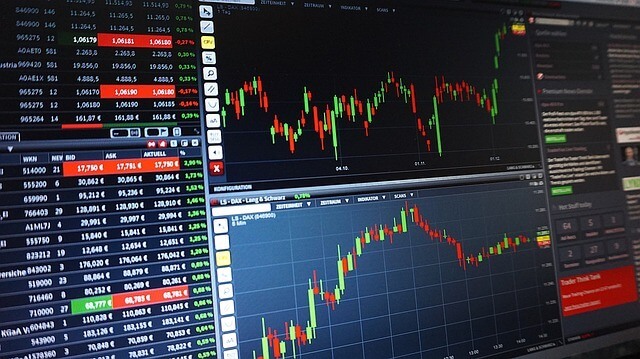The Ultimate Guide to Using MetaTrader 4 Indicators for Effective Market Analysis
Diving into the world of Forex trading without the right tools can be like navigating a ship in stormy seas without a compass. Fortunately, the advent of trading platforms has brought about a revolution in how traders analyze the market, plan their strategies, and execute trades. Among these platforms, one stands out for its robustness, user-friendly interface, and, most importantly, its comprehensive suite of analytical tools: the well-regarded MetaTrader 4.
At the heart of successful trading lies effective market analysis, and it’s here that the platform truly shines. It comes equipped with a vast array of indicators, each serving a unique purpose in helping traders make informed decisions. Understanding and utilizing these indicators effectively can dramatically enhance your trading experience, offering insights into market trends, momentum, and potential entry and exit points.

Image Source: Pixabay
The beauty of these indicators lies in their diversity and versatility. Whether you’re a day trader looking for short-term opportunities or a long-term investor aiming to identify major market trends, the platform’s indicators can be tailored to suit your trading style and objectives. Let’s delve into how these tools can be used to carve out success in the volatile world of Forex trading.
Firstly, trend indicators are invaluable for identifying the direction of market movements. Tools such as the Moving Average (MA) or the Moving Average Convergence Divergence (MACD) provide clear insights into whether a market is trending upwards, downwards, or is in a state of consolidation. By applying these indicators, traders can align their strategies with the overall market trend, increasing their chances of executing successful trades.
Moreover, momentum indicators, like the Relative Strength Index (RSI) or the Stochastic Oscillator, offer clues about the strength of a market trend. These tools help traders determine whether an asset is overbought or oversold, indicating potential reversal points. This information is crucial for timing entries and exits, enabling traders to capitalize on price corrections or reversals.
Volume indicators, on the other hand, provide insights into the trading activity behind price movements. Indicators such as the Volume Oscillator or On-Balance Volume (OBV) can signal the strength of a trend based on trading volume. A price movement accompanied by high volume is more likely to be sustainable, offering traders confidence in their market analysis.
Lastly, volatility indicators like the Average True Range (ATR) or Bollinger Bands give traders a sense of the market’s stability. In highly volatile markets, these indicators can help traders adjust their risk management strategies, setting appropriate stop-loss and take-profit levels to protect their investments.
Effective use of these indicators requires practice and a deep understanding of each tool’s strengths and limitations. The platform offers the flexibility to customize indicators according to your preferences, allowing you to combine multiple tools for a more comprehensive analysis. Furthermore, the platform’s ability to support custom indicators means that traders are not limited to the built-in tools; they can explore or create indicators that match their specific analytical needs.
Incorporating these indicators into your trading strategy can significantly improve your market analysis, providing a clearer picture of market dynamics and helping you make more informed trading decisions. However, it’s important to remember that no indicator is infallible. Successful trading combines the use of technical indicators with fundamental analysis, risk management, and, importantly, the trader’s intuition and experience.
The indicators provided by MetaTrader 4 are essential tools for any trader looking to analyze the Forex market effectively. By mastering these indicators, traders can enhance their ability to spot trends, gauge momentum, assess market volume, and understand volatility, thereby improving their overall trading strategy. As with any tool, the key to success lies in understanding how to use them effectively, combining them with a solid trading plan, and continuously learning and adapting to the market’s ever-changing dynamics.

Comments